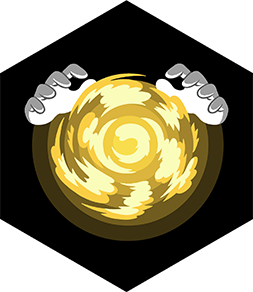Let's Make Potions!
Make imaginative, safe potions using colored water, baking soda, vinegar, food coloring, and glitter; observe reactions, measure ingredients, and label your bottles.



Step-by-step guide to make safe pretend potions
Step 1
Gather all the materials and put them on the tray.
Step 2
Use the measuring cup to pour 1/2 cup of water into each bottle.
Step 3
Write a name or number on each label with your coloring materials.
Step 4
Stick a label onto each bottle so you can tell them apart.
Step 5
Add 3 drops of a different food coloring to each bottle to make bright potion colors.
Step 6
Sprinkle a small pinch of glitter into each bottle to make them sparkle.
Step 7
Stir each bottle gently once with the mixing spoon until the color and glitter mix.
Step 8
Put 1 teaspoon of baking soda into Bottle A to make a fizz experiment.
Step 9
Slowly pour 1 tablespoon of vinegar into Bottle A and watch the fizz.
Step 10
Watch the reaction in Bottle A for about 30 seconds and think about what you see.
Step 11
Put 1/2 teaspoon of baking soda into Bottle B to try a smaller fizz.
Step 12
Slowly pour 1/2 tablespoon of vinegar into Bottle B and watch how it reacts.
Step 13
Compare which bottle fizzed more and write one short sentence about the difference on each label.
Step 14
Decorate each bottle label with drawings or stickers to make your potions look magical.
Step 15
Share your finished creation on DIY.org
Final steps
You're almost there! Complete all the steps, bring your creation to life, post it, and conquer the challenge!


Help!?
What can we use if we don't have food coloring or glitter?
If you don't have food coloring use powdered drink mix (like Kool‑Aid), liquid watercolors, or a tiny bit of beet or turmeric juice for the 'add 3 drops of a different food coloring to each bottle' step, and if you don't have glitter use sequins, tiny beads, or biodegradable glitter to 'sprinkle a small pinch of glitter into each bottle'.
My bottle didn't fizz—what might have gone wrong and how do I fix it?
Check that you measured correctly (1 teaspoon baking soda and 1 tablespoon vinegar for Bottle A, 1/2 teaspoon and 1/2 tablespoon for Bottle B), that the baking soda was actually in the bottle when you slowly poured the vinegar, and try pouring the vinegar more slowly or stirring gently as in the 'Slowly pour' and 'Stir each bottle gently' steps to get a stronger fizz.
How can I adapt this activity for different age groups?
For preschoolers, have an adult premeasure and pour the 'baking soda' and 'vinegar' for the fizz steps while the child pours the 1/2 cup of water, adds color and glitter, and sticks labels, and for older kids let them vary baking soda/vinegar amounts, time each reaction, and write the comparison sentence on each label themselves as in the 'Compare which bottle fizzed more' step.
How can we extend or personalize our potions after finishing the basic steps?
Extend the activity by making a fizz-strength chart from the 'Compare which bottle fizzed more' outcome, adding scents or glow‑in‑the‑dark paint when you 'decorate each bottle label', trying different bottle sizes or extra ingredients for new reactions, and photographing the decorated potions to 'Share your finished creation on DIY.org'.
Watch videos on how to make safe pretend potions
Easy DIY potions for curious kids plus science explanations
Facts about kitchen chemistry for kids
✨ Glitter sparkles by reflecting light — choose biodegradable glitter if you want crafty sparkle that’s kinder to nature.
🧪 Baking soda + vinegar fizz because they make carbon dioxide gas — that’s why your potion bubbles!
🍶 Household vinegar is about 5% acetic acid — it’s great for safe kitchen science experiments (but not for drinking).
🌈 One tiny drop of food coloring can tint a whole cup of water — perfect for making bright, magical potions!
🧂 Sodium bicarbonate (baking soda) is used in baking to help cakes rise and also as a handy household cleaner.
How do you make potions with kids?
What materials do I need to make kid-safe potions?
What ages is the potion activity suitable for?
Is making potions safe? What safety steps should we follow?


One subscription, many ways to play and learn.
Only $6.99 after trial. No credit card required



